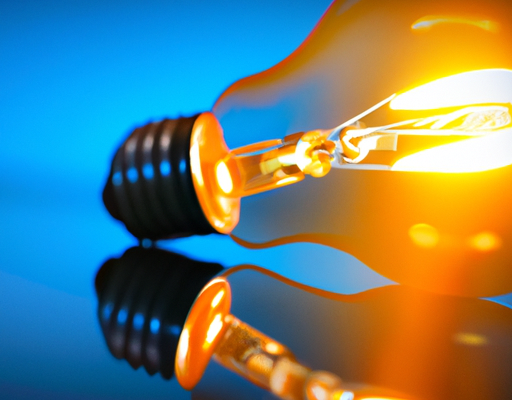“Start Saving Energy Today – Unlock a Brighter Future!”
Introduction
Saving energy is an important part of living a sustainable lifestyle. It not only helps reduce your carbon footprint, but it can also save you money on your energy bills. There are many ways to save energy, from simple changes in your daily habits to more complex energy-saving solutions. In this article, we will discuss some of the best ways to save energy and how you can start implementing them in your home.
10 Simple Ways to Save Energy in Your Home
1. Replace your light bulbs with energy-efficient LED bulbs. LED bulbs use up to 90% less energy than traditional incandescent bulbs and last up to 25 times longer.
2. Unplug electronics and appliances when not in use. Even when turned off, electronics and appliances still draw energy from the outlet.
3. Install a programmable thermostat. Programmable thermostats allow you to set temperatures for different times of the day, so you don’t have to worry about manually adjusting the temperature.
4. Use natural light whenever possible. Open the curtains and blinds during the day to take advantage of natural light and reduce the need for artificial lighting.
5. Install weather stripping around windows and doors. Weather stripping helps to seal air leaks and reduce the amount of energy needed to heat and cool your home.
6. Wash clothes in cold water. Washing clothes in cold water can save up to 80% of the energy used for washing clothes in hot water.
7. Use a microwave instead of an oven. Microwaves use up to 80% less energy than conventional ovens.
8. Install a low-flow showerhead. Low-flow showerheads use up to 40% less water than traditional showerheads, which can help reduce energy costs.
9. Turn off the lights when you leave a room. This simple step can help reduce energy consumption and save money on your energy bill.
10. Insulate your home. Proper insulation can help keep your home warm in the winter and cool in the summer, reducing the amount of energy needed to heat and cool your home.
How to Make Your Home More Energy Efficient
Making your home more energy efficient is an important step in reducing your carbon footprint and saving money on energy bills. There are several simple steps you can take to make your home more energy efficient.
First, you should check the insulation in your home. Insulation helps keep the heat in during the winter and the cool air in during the summer. If your insulation is inadequate, you should consider adding more.
Second, you should consider replacing your windows and doors with energy-efficient models. Energy-efficient windows and doors are designed to keep the heat in during the winter and the cool air in during the summer.
Third, you should consider installing a programmable thermostat. A programmable thermostat allows you to set the temperature of your home to a comfortable level while you are home and then lower the temperature when you are away. This can help you save money on energy bills.
Fourth, you should consider replacing your old appliances with energy-efficient models. Energy-efficient appliances use less energy and can help you save money on energy bills.
Finally, you should consider installing solar panels. Solar panels can help you generate your own electricity and reduce your reliance on the grid.
By taking these simple steps, you can make your home more energy efficient and save money on energy bills.
The Benefits of Installing Solar Panels
The installation of solar panels is becoming increasingly popular as a way to reduce energy costs and help the environment. Solar panels are a great way to generate clean, renewable energy from the sun, and they offer a number of benefits.
One of the primary benefits of installing solar panels is the cost savings. Solar panels can significantly reduce energy costs, as they generate electricity from the sun’s energy, which is free. This can result in significant savings on electricity bills, as well as a reduction in the amount of energy used from traditional sources.
In addition to cost savings, solar panels also offer environmental benefits. Solar energy is a clean, renewable source of energy that does not produce any emissions or pollutants. This means that solar energy does not contribute to global warming or other environmental issues.
Solar panels are also relatively easy to install and maintain. They require minimal maintenance and can last for decades with proper care. This makes them a great long-term investment that can pay for itself over time.
Finally, solar panels can increase the value of a home. Homes with solar panels are often more attractive to potential buyers, as they can offer significant savings on energy costs. This can make a home more desirable and increase its value.
Overall, installing solar panels is a great way to reduce energy costs, help the environment, and increase the value of a home. With the numerous benefits they offer, it is no wonder that solar panels are becoming increasingly popular.
How to Reduce Your Carbon Footprint

Reducing your carbon footprint is an important step in helping to protect the environment. Carbon footprints are the amount of carbon dioxide and other greenhouse gases that are released into the atmosphere as a result of human activities. By reducing your carbon footprint, you can help to reduce the amount of greenhouse gases that are released into the atmosphere and contribute to global warming.
There are several ways to reduce your carbon footprint. One of the most effective ways is to reduce your energy consumption. This can be done by making simple changes such as turning off lights and appliances when not in use, using energy-efficient light bulbs, and unplugging electronics when not in use. Additionally, you can reduce your energy consumption by using renewable energy sources such as solar and wind power.
Another way to reduce your carbon footprint is to reduce your consumption of goods and services. This can be done by buying fewer items, buying second-hand items, and avoiding single-use items. Additionally, you can reduce your consumption of goods and services by using public transportation or carpooling when possible.
Finally, you can reduce your carbon footprint by reducing your waste. This can be done by composting food scraps, recycling, and avoiding single-use items. Additionally, you can reduce your waste by buying items with minimal packaging and avoiding products with excessive packaging.
By following these simple steps, you can help to reduce your carbon footprint and contribute to a healthier environment.
The Pros and Cons of Wind Energy
Wind energy is a renewable energy source that has become increasingly popular in recent years. It is a clean, sustainable energy source that can be used to generate electricity and reduce dependence on fossil fuels. However, there are both advantages and disadvantages to using wind energy.
Pros
One of the main advantages of wind energy is that it is a renewable energy source. Wind is a natural resource that is constantly replenished, so it is a sustainable energy source that can be used indefinitely. Wind energy is also clean and does not produce any emissions or pollutants, making it an environmentally friendly energy source. Additionally, wind energy is relatively inexpensive to produce and can be used to generate electricity for homes and businesses.
Cons
One of the main drawbacks of wind energy is that it is intermittent and unpredictable. Wind speeds can vary greatly, making it difficult to predict how much energy can be generated at any given time. Additionally, wind turbines can be noisy and can be a nuisance to people living nearby. Wind turbines can also be dangerous to birds and other wildlife, and they can be an eyesore in some areas. Finally, wind energy requires a large amount of land to be used for the turbines, which can be difficult to obtain in some areas.
In conclusion, wind energy is a renewable energy source that has many advantages, but it also has some drawbacks. It is important to consider both the pros and cons of wind energy before deciding whether or not it is the right choice for your energy needs.
How to Choose the Right Energy-Saving Appliances
When it comes to choosing energy-saving appliances, there are a few key factors to consider. First, it is important to understand the energy efficiency ratings of the appliance. The energy efficiency rating is a measure of how much energy the appliance uses compared to other models. The higher the rating, the more energy efficient the appliance is.
Second, it is important to consider the size of the appliance. Larger appliances tend to use more energy than smaller ones, so it is important to choose an appliance that is the right size for your needs.
Third, it is important to consider the features of the appliance. Some energy-saving appliances may have additional features that can help reduce energy consumption. For example, some refrigerators may have an energy-saving mode that can help reduce energy consumption.
Finally, it is important to consider the cost of the appliance. Energy-saving appliances may cost more upfront, but they can save you money in the long run by reducing your energy bills.
By considering these factors, you can make an informed decision when choosing energy-saving appliances. Doing so can help you save money and reduce your energy consumption.
The Benefits of Using LED Lighting
LED lighting has become increasingly popular in recent years due to its numerous benefits. LED stands for light-emitting diode, and it is a type of lighting technology that is more efficient and longer-lasting than traditional lighting. LED lighting offers a variety of advantages that make it an ideal choice for many applications.
One of the primary benefits of LED lighting is its energy efficiency. LED lights use significantly less energy than traditional lighting, which can result in significant cost savings. LED lights also last much longer than traditional lighting, which means that they require less frequent replacement. This can result in further cost savings, as well as reduced maintenance costs.
LED lighting also offers superior lighting quality. LED lights produce a bright, even light that is free of flicker and glare. This makes them ideal for applications such as task lighting, where a consistent, bright light is needed. LED lights also produce very little heat, which makes them safer to use in areas where traditional lighting may be too hot.
LED lighting is also very versatile. LED lights come in a variety of shapes, sizes, and colors, making them suitable for a wide range of applications. They can be used both indoors and outdoors, and they are available in both dimmable and non-dimmable versions. This makes them suitable for a variety of lighting needs.
Finally, LED lighting is environmentally friendly. LED lights do not contain any hazardous materials, and they do not produce any harmful emissions. This makes them a great choice for those who are looking to reduce their environmental impact.
Overall, LED lighting offers a variety of benefits that make it an ideal choice for many applications. Its energy efficiency, long lifespan, superior lighting quality, versatility, and environmental friendliness make it an excellent choice for both residential and commercial applications.
Conclusion
The best ways to save energy are to use energy-efficient appliances, turn off lights and electronics when not in use, use natural light when possible, and unplug appliances when not in use. Additionally, using renewable energy sources such as solar and wind power can help reduce energy consumption. By taking these steps, we can reduce our energy consumption and help protect the environment.









